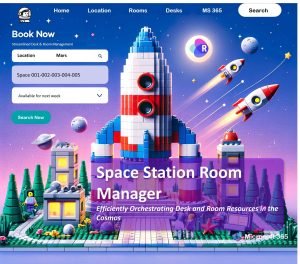Methods for your software implementation plan
Create an efficient software implementation plan and avoid any pitfalls during actual implementation.
The absence of a detailed software implementation plan can result in unrealistic expectations, overlooked impacts, and frustrated employees, among other issues.
This highlights that most organizations are fixated on which product to buy while putting less emphasis on implementation. Part of the reason is that business software is typically marketed for its features, while adoption challenges are downplayed.
Fortunately, you can avoid typical software implementation pitfalls by developing a robust plan that includes the following strategies and keeping it simple. Software can be very complicated and even the solution with the nicest feature you can imagine is useless if it is not used by your employees and has not an outcome. Focus on the must-have feature, and postpone other features or requirements as nice to have for the future. Try to find a solid solution, which is easy to implement and easy to accept by your end-users.
1. Match your needs with vendor offerings
Focus on what the software should do for your organization rather than on what it can do. Understand that business software isn’t built just for your organization. It’s designed for as many organizations as possible. You are buying business software a solution to simplify your existing processes or formalize those that aren’t yet well defined. So check what the outcome should be rather than what the solution can do.
The outcome when discussing needs with vendors is to determine exactly how your processes can be adapted to their solution and whether or not the result is an overall improvement that helps your organization and employees better achieve its goals.
Summary, the better you know your needs, the easier you can decide. It all starts with your requirements and needs. You have first to do your homework by getting the use cases and defining your requirements, and yes we know this might a hard work, but very important. This is actually nothing else than due diligence.
Be careful with a change request, as any change offered by the vendor, even so, it is feasible, might have a risk, which pops up somewhere else later.
2. Conduct due diligence
Before making a buying decision, ensure that you completely understand your needs and your use cases. Speak to the vendor ask for a demo, but don’t overstress the vendor’s time. The key is to have the right stakeholders in the call and to ask the right questions. The better you have done the due diligence, the better you will get the right answers.
Don’t overestimate product reviews for the vendor product by searching google or review portals. Don’t stress the vendor with reference cases. The vendor will provide you all this, once you move forward and come to a commitment for the solution.
3. Consider the impact of a new project and a new solution
Who is Involved?
Seek input from members of each department. Identify software users and stakeholders in your company, and document how their workflow might get affected. But don’t overload the boat with too many opinion-makers. Keep it simple and straightforward.
What is replaced and new?
The potential for duplicated data and processes must be identified and mitigated. Also, just because a feature is included in the new software doesn’t necessarily mean it should be used. It might also make sense to limit initial adoption to specific functions and incorporate more features with time. You know better than anyone else, how your users work, what they like and dislike, don’t make their lives harder. Ask them how they work today, and show them how the change could be a better match in the future.
When is the best time?
Bad timing and a short implementation timeline can disrupt your software implementation plan. Minimize the potential impact of downtime by determining when the implementation should or should not take place. Stay realistic, and buffer time to the project timeline. Nothing is riskier than starting a software project without having enough time for adoption, user acceptance, and user training.
4. Find the key users
Key users and administrators should be selected based on their technical ability and communication skills. With a profound understanding of the use cases.
Select key users from among employees who had lobbied for the new tool, as they are more likely to show extra enthusiasm in the project. But don’t use them as portals or product advocates. This role must be provided by the upper management.
5. Keep it simple and be upfront
Communication skills are key to painless software implementation, and the management needs to explain the reasons for the change, not the stakeholders or the administrators. Speak to employees about how exactly they’ll benefit from the new solution and the ways in which it’ll make their jobs easier.
All business starts with trust. A serious software vendor will take the role of an trusted advisor, give him this change, and you will discover his potential helping you to get the expected outcome.
Useful articles to read: Vendor Selection: How to Define Your Requirements















